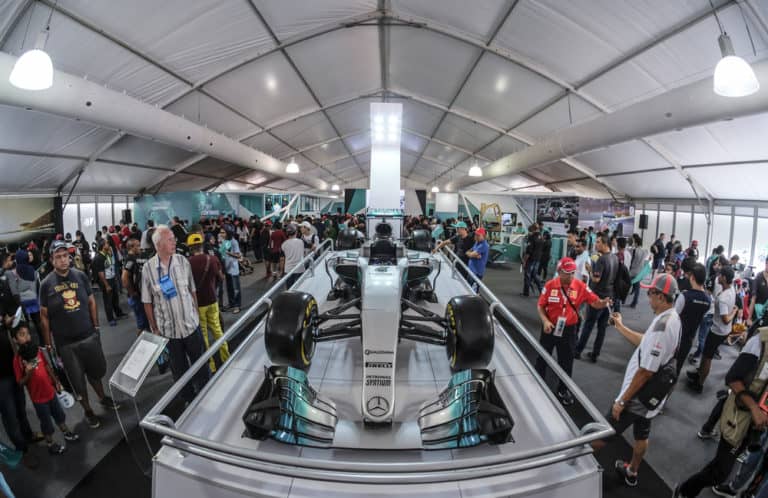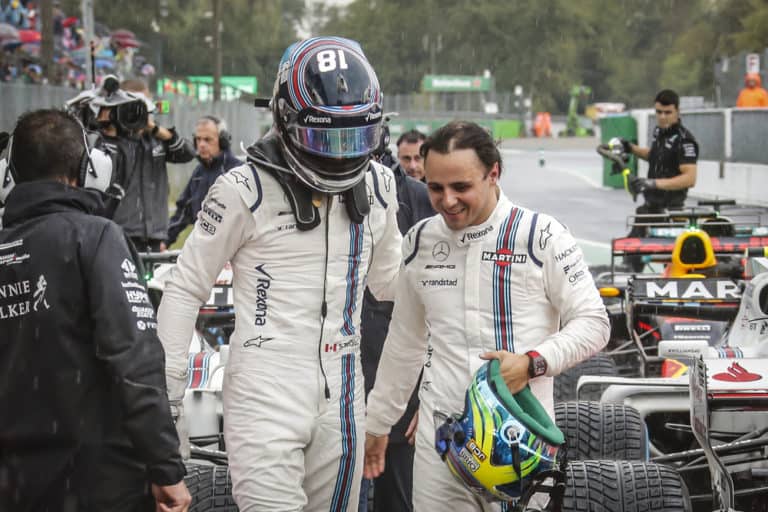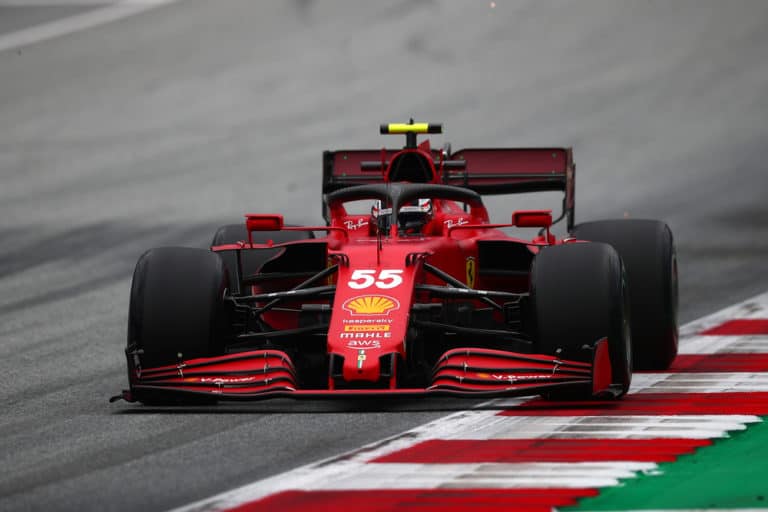The atmosphere around an F1 race is something that cannot be explained in words. The sound of the cars, the speed at which they are traveling, and the crowds make these events truly special. With that being said, it is the sound of the cars and the speed that everyone loves. But, just how powerful are these racing cars? let’s take a look
The 1.6L V6 turbocharged engine, along with its power unit, can produce around 1050 horsepower. When you couple this power with the chassis and the car’s specifications, you have a vehicle that can reach up to just under 400 km per hour. The top speed on a track is 372.4 km per hour done by the Williams racing team.
In today’s article, we want to take a deep dive into the power of an F1 engine. Along the way, we will list a few facts that you can use if you find yourself in a situation where people are talking about F1. We are not going to get too technical in this article. So, let’s jump into it.
How Much Horsepower Do F1 Cars Have?
Every year, F1 engines change. There are certain restrictions that every engine manufacturer needs to meet when producing an engine for their F1 car. However, racing teams spend millions of dollars every year trying to improve their engines within those limits. The best way to determine how much raw power an engine has is to look at its horsepower.
For the 2024 F1 season, it is predicted that the engines have approximately 1050 HP. Some of that power is stored in the electrical unit. While the car generates speed and power, the energy gets stored in this unit. That then gets used during the race when the drivers need a little boost or extra power to slow the car down. It is not the same as DRS but similar.
Before we carry on, it is essential to note that an engine’s horsepower does not equal the raw performance of a car. There are many things to factor in that we will discuss in the top speed section of this article.
It is best to think of the best cars when using those numbers because each engine is different. So, we know that the most potent engines belong to Mercedes and Red Bull racing even though red Bull uses a Honda engine.
Now, we need to put this horsepower into perspective. Let’s use a list of Cars for this:
| Car | Horsepower |
| 2015 Golf TDI | 150 hp |
| 2021 Golf GTI | 245 hp |
| 2020 Mercedes CLA45 AMG | 382 hp |
| 2022 Nissan GT-R 3.8L V6 | 565 hp |
| Lamborghini Aventador | 730 hp |
| 2024 F1 car | Average 1000 to 1050 hp |
While the Aventador might seem close, please remember, that does not translate to the raw performance of the car.
How Do F1 Cars Produce So Much Power?
When you are driving in your car, you might see your rpm’s. Not many people fully understand what these do. All most people know is that you should not let your revs go into the red zone, right? Well, the RPM stands for the “Revolutions Per Minute” that an engine can spin at. F1 cars can spin at 15000 to 22000 RPMs.
The faster these engines spin, the more power they produce. The RPM directly affects the torque and horsepower of an engine. An F1 engine can rev at such high speeds because they have a high bore/stroke ratio. Basically, the car has an increased bore and a low stroke.
We also need to factor in combustion. All of this is getting extremely technical, which we want to avoid. So, let’s just say that an F1 engine is fast because it can rev at much higher speeds than most normal engines. Let’s put this in perspective.
The average car has an RPM limit of 6000. Even supercars apply this limit as it creates sustainability. F1 cars, as discussed, spin at 15000 to 22000.
Mercedes AMG Project One
In this section of the article, I want to talk about something that I have been keeping an eye on since it was announced in 2017. What if you put an F1 engine into a road car? Well, that is the aim of the Mercedes AMG project one.
The car will be a hybrid mainly consisting of an F1 engine that can push up to 1000 horsepower. It is said that this hybrid supercar will be able to push out approximately 350 km per hour (217.48 mph.) However, that speed will not be achieved only by the F1 engine.
A lot of design and development has gone into the structure of the chassis and the aerodynamics of the overall car. Here is what you can expect.
- Engine: F1 1.6L turbocharged V6 with an electric motor attached, offering 25km on a single charge.
- Output: 1000 HP (740 KW)
- Release date: Sometime in 2021 or 2022.
Mercedes-AMG Project ONE | After Work with Lewis Hamilton
F1 Cars Top Speed
There are two ways we can look at the top speed of an F1 car. After that, we will discuss some other important facts, such as the 0 to 60 times and much more, so let’s get into it.
Valtteri Bottas, who currently races for Mercedes, set the fastest top speed in 2016 on a track during the Mexican Grand Prix. He hit an astonishing 372.5km/ph (231.4 mph.) He was racing for the Williams race team. So, that engine and car currently hold the world record.
The fastest an F1 car has ever gone was not done on the track. Instead, it was done on the Bonneville Salt Flats. Honda wanted to see how fast their engine can go and so they tried to hit the 400 km per hour barrier but fell just short at 397.360 km per hour (246.908 mph.)
Theoretically, an F1 car should be able to hit 0 to 60 in 1 second. However, F1 cars do 0 to 60 in approximately 2.6 seconds. Many factors can change this, such as the tire compound being used and the design of the chassis. Also, we should consider the skill of the driver.
What we can say is that F1 engines are high-speed machines. They take many resources to make, but they also take a lot of energy to design. The team with the most resources is often the fastest on the track.
What Is The Most Powerful F1 Engine Ever?
In 1986 BMW released what is still considered the most powerful engine ever. The BMW M12/13/1 was a monster. The engine was used in three different teams. Benetton, Arrow and Brabham. 1100 hp. That sounds incredible, right? The engine had a theoretical horsepower of 1100.
Does that mean that F1 cars were faster back then than they are now? No. Just because a vehicle has a powerful engine doesn’t mean that it handles well on a track. Take the top speed ever recorded on an F1 track. Bottas did this in 2016. During this time, F1 cars were already using the 1.6L V6 engine.
Theoretically, that BMW engine is much more potent than the current engines we have today. But, as I will keep repeating in this article, more power does not necessarily translate to better performance. For example, the engine inside a 12-ton truck has a lot more horsepower than an engine in a Golf GTI, but a GTI will destroy a truck in terms of speed on the road.
Which Engine Has the Most F1 Wins?
Now it’s time to give you an exciting fact. People always like to talk about who the best racing team is in F1. The problem is how do you measure who is the best? Is it current performance, or do you take the overall performance throughout the years? The choice is yours. All I can do is list the number of wins that each engine has in F1 since its inception in the 50s.
| Engine Manufacturer | Wins |
| Ferrari | 239 |
| Mercedes | 204 |
| Ford | 176 |
| Reault | 168 |
| Honda | 84 |
Right now, the Honda engine inside the red bull car is a real challenger to Mercedes, who have been dominating the sport over the last few years. Ferrari has slipped down slightly even though they are still one of the best teams on the track.
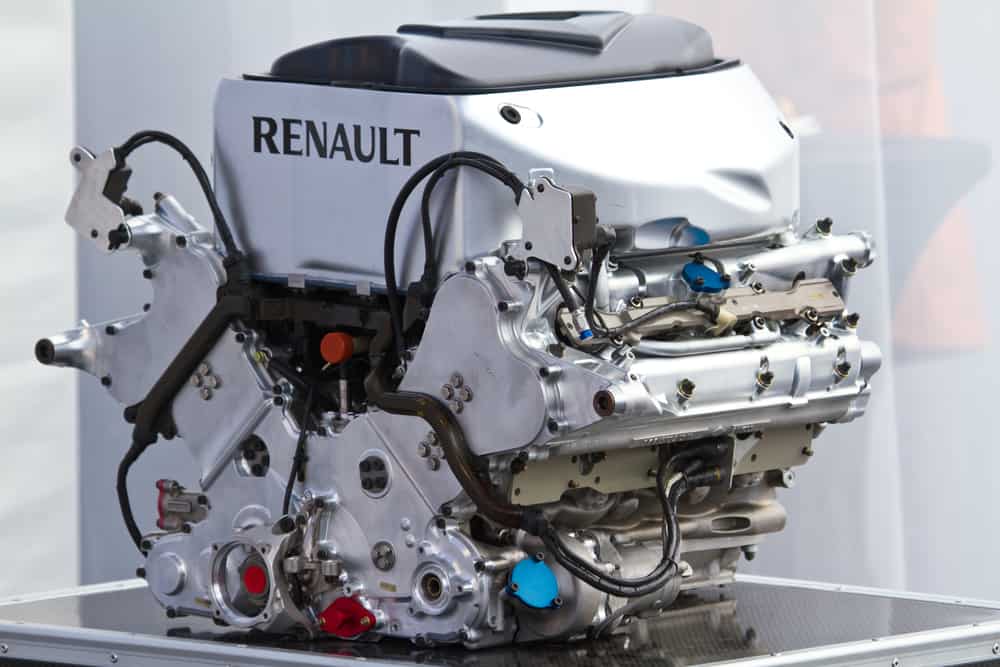
Who Decides What Engines Can Be Used in F1?
There are a lot of restrictions when it comes to building an F1 car. If a manufacturer does not meet certain conditions, they will be heavily penalized, or in severe cases, they will not be allowed to race in a season until they get everything sorted out. Race teams cannot afford this because once you are out of the F1, it is complicated to get your seat back.
The FIA is the Formula 1 governing body. They spend millions of dollars every year in research and development. While the governing body determines the rules of every F1 season, they also determine the regulations that manufacturers have to meet with their cars and their drivers.
There are certain things that this governing body factors in when they make their rules. These factors can include:
- Accessibility
- Safety
- Fairness
- The local economic impact of each race.
They also take into consideration the environment. F1 used to come under heavy scrutiny back in the day when they use their 3.5L and 2.5L V8 and V10. Not only were these engines a waste of power and resources, but they were also a danger to the environment. They also created noise pollution. Noise pollution affects the environment by disrupting animals within their natural habitat or adaptive habitats according to their city.
Overall, we need the FIA to keep doing what they are doing because they are making strides in safety and environmental awareness. Take the 2020 crash by Romain Grosjean in Bahrain. He was against the Halo used by F1 cars introduced by the FIA. After his accident, he came out while in hospital and said that the Halo saved his life.
How Much Do F1 Engines Cost?
An F1 manufacturers garage used to be like any other mechanical garage with dirty floors, oily tools, and oil all over the floors. However, a lot has changed. Walking into a manufacturer’s workspace, you will notice that it looks very futuristic, spotless, and efficient.
Everything is so clean because the technology that goes into an F1 engine is highly advanced. With all of these advancements in technology, an F1 engine costs approximately $10.5million to build. Remember that is the engine and not the entire car.
There is a lot of profit from manufacturing the engine for F1. That is why getting a contract is so highly sought-after. Take a company like Renault, a partly state-owned French company that races in F1. Over the last few years, maybe a decade, they have not been title contenders. However, they were contracted by one of their rival teams to create an engine for them.
Creating an engine for Red Bull meant that they were not using their own resources. Instead, they were using red Bull’s money to develop a new engine for Red Bull, and therefore they were able to create a better machine for their rival than they could for themselves simply because of the money it costs.
I understand that Renault lost their contract to develop engines for Red Bull, and the contract was given to Honda, which has produced some of the best engines in F1 history.
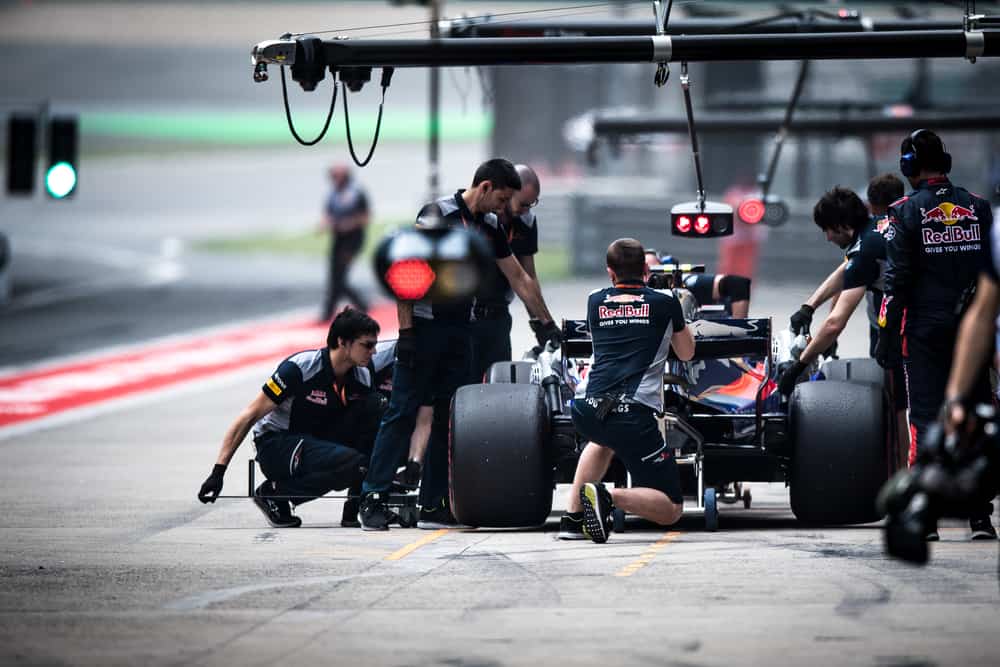
Why Did F1 Switch To V6 Engines?
We need to quickly eliminate the misconception that more power means a faster F1 car because that is not true. So, what does a V8 do differently from a V6?
In its most straightforward way, a V8 creates a more significant displacement than a V6, so why does that not equal raw performance? Well, at some point, the displacement of power needs to be matched by the car’s chassis and, most notably, the tires. If the displacement is too high, all that happens is your tire spins.
Having a tire spin either at the start of a race or at the corner’s exit can significantly reduce the car’s performance. It would be best if you also considered the weight of these larger engines. The power to weight ratio is critical. What is the point of having a more powerful engine when all it does is propel a heavier car forward?
In practice, you could achieve the same type of performance with a smaller engine and an overall lighter car than you can with a heavy engine in a heavier car. I really hope that makes sense.
One final thing to note is that the FIA has tried to make Formula one as accessible to the smaller teams as they can. Restricting the engine size is one way of doing this. However, as we have discussed, some companies have the resources to produce better engines within those limits. Even if they gain 1/10 of a second, that is a significant result when you multiply that over 71 laps.
What other Engines Have F1 Cars Used?
In the early days of F1, cars used a V12 engine. Fans loved these engines. However, with the introduction of new technologies, these engines were found to be inefficient. They were dropped from the lineup in 1996.
F1 also briefly used V10 engines, but that did not last long.
The V8 was used for a few years as well. All of these engines have their pros and cons. Fans love the V12, and racers loved them as well. However, sustainability plays a huge role in the integrity of F1.
Final Thoughts
That brings us to the end of this article. Hopefully, we answered all of your questions, including some that you might not have known that you had. For anything else you want to know about F1, feel free to look at some of our other articles as we upload every week.


